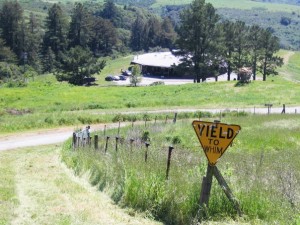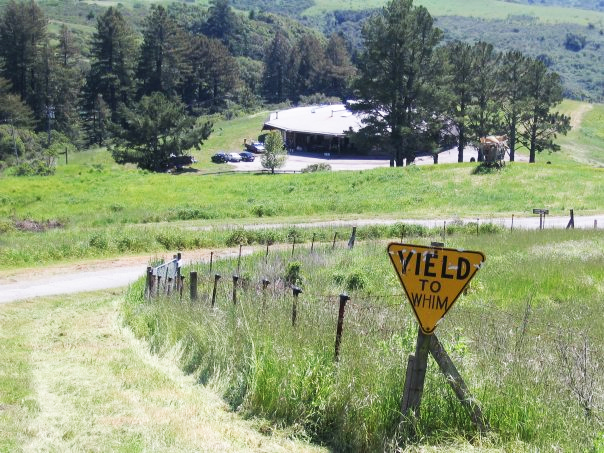November is over, the Christmas decorations are going up, and the sun is going down earlier and earlier in the day here in Norway. But, for the first time since I moved here almost eight years ago, I wasn’t as focused on the light (and lack of it) this year, I was focused on a goal, a daily word count target, and on winning NaNoWriMo in my first attempt. If you’re following me on Twitter, or my author page on Facebook, you will have seen that I not only hit the goal of 50,000 words nine days early, but that by the end of the month I had written close to 71,000 words. I find those two facts astounding enough, but what has surprised me the most is what I learned from what I originally thought of as a gimmicky type of thing that no real writers take very seriously.
When I started seriously working on Amaranth back in 2011, I dedicated one day a week to writing, and I would write the entire day, then let the ideas sink in over the following week so I’d know exactly where to start when I sat down in front of the screen again. That was one of the things that made me the most nervous about NaNo: there was no time to let ideas settle! What if I dried up every time I sat down to write? Or what if I wrote crap just to meet the word count target, only to discover I was running my story off in a ditch? This is why I decided to write my fourth Eidolon novel for NaNo, rather than the book I’ve been planning to write when the series is over. I knew The Eidolon Cycle would be fine with or without this fourth book, and if it turned out to be terrible, it wouldn’t hurt the series to simply dump it. The other book is one I’ve been planning for years and didn’t want to risk not doing it properly.
However, as it turned out my fears were groundless. There was never a day when I sat down with nothing to write, and although I only needed to write around 1700 words a day to meet the 50k goal, most days I ended up with between two and three thousand words. I only missed one day, and that was a Sunday where I spent all day with my daughter, then all evening working on a book release. The zero on my calendar is still mocking me, despite the fact that I got down a mammoth 4300 words the following day to make up for it—but that’s just me; I can’t stand to have broken the chain. But what kept me in fresh material was the idea suggested by my motivational NaNo writer friend, Audrey, who quoted Hemingway as having said he never drained the well. In other words, I left myself an idea or two to pick up the thread of the following day. And the more I wrote, the more I could see these characters and their world, and the more I knew what they were going to do or say next. So that gave me:
Lesson number one: Creativity is a muscle. The more you use it, the more it gives you to work with.
BUT! Back when I was writing once a week, I would usually finish up the day with three to four thousand words, and I never stopped writing until I had completed the chapter I was working on. It felt nice and neat to complete a chapter each writing session, and it made the overall structure of the novel pretty clean, meaning there wasn’t a lot of major rearranging to do when editing time came. During NaNo, I couldn’t afford to spend the entire day writing, and if I was to follow lesson number one above, I couldn’t use up all my ideas or I’d risk writer’s block the next day. With that in mind, I had to do something which was (to me) pretty drastic: I had to forget about chapters and neat little literary packages, and just write scenes. And sometimes [GASP!] leave them unfinished. That was hard.
Lesson number two: A first draft is allowed to be messy, and should be about the story, not about neat chapter packages.
I have said before that one of my main issues when I write is that I forget to paint the scenery. I write what my characters are saying, thinking, feeling and doing, often forgetting to paint an adequate picture of where and when they’re doing all these things. During NaNo, I embraced this about myself, and really let myself go into full first draft mode. Get the story out, put the detail in later. This proved to be a strangely valuable lesson; not only could I allow myself to write the way I naturally write, but it means that when I come back during editing to describe the sights, sounds and smells my character is experiencing, I will know her so well that it will be much easier to do it in her voice.
Lesson number three: Set free your natural drafting instincts; everything else can be fixed during editing.
The fourth, final, and most important lesson I have taken away from my NaNo experience is the one that will change my writing life forever. I have always claimed that I need a large chunk of uninterrupted time in order to write. NaNo blew that theory to pieces: most days I started at 9am and had written two or three thousand words before 11am. Given that I made a life choice to become a freelancer so I would have more flexibility to write, it’s frustrating to know that I’ve only just learned what that really means. I can apparently write whole novels in a matter of weeks if I only give myself the space and time to do it. This was never more clear to me than on Day 14 when I hit 33,963 words. On that day, I just happened to check the word count of book three (which, as of that day, I had been working on for two weeks shy of one year) and its word count was ONE WORD LESS! So, in fourteen days, I had surpassed my own word count for the previous eleven and a half MONTHS by one word. This is the kind of moment that one might call an epiphany.
Lesson number four: It is possible to write every day. You just have to make it a priority.
Those are my lessons, and what I started as an exercise in “let’s see if I can do this” turned into “Oh my God! I could do this every day for as long as I want to!” And I want to. I have printed out a new calendar page for December and started marking in my word counts each day, putting another big red cross through each day I write, and I will do it until I run out of words, may that be many, many words from now.














